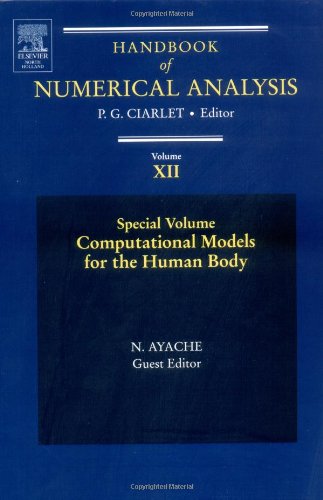

Most ebook files are in PDF format, so you can easily read them using various software such as Foxit Reader or directly on the Google Chrome browser.
Some ebook files are released by publishers in other formats such as .awz, .mobi, .epub, .fb2, etc. You may need to install specific software to read these formats on mobile/PC, such as Calibre.
Please read the tutorial at this link. https://ebooknice.com/page/post?id=faq
We offer FREE conversion to the popular formats you request; however, this may take some time. Therefore, right after payment, please email us, and we will try to provide the service as quickly as possible.
For some exceptional file formats or broken links (if any), please refrain from opening any disputes. Instead, email us first, and we will try to assist within a maximum of 6 hours.
EbookNice Team

Status:
Available0.0
0 reviews
ISBN 10: 0444515666
ISBN 13: 978-0444515667
Author: Nicholas Ayache
Provides a better understanding of the physiological and mechanical behaviour of the human body and the design of tools for their realistic numerical simulations, including concrete examples of such computational models. This book covers a large range of methods and an illustrative set of applications.
CHAPTER I
1. Introduction
2. A brief description of the human vascular system
3. The main variables for the mathematical description of blood flow
4. Some relevant issues
CHAPTER II
5. The derivation of the equations for the flow field
6. Some nomenclature
7. The motion of continuous media
8. The derivation of the basic equations of fluid mechanics
9. The Navier-Stokes equations
CHAPTER III
10. The incompressible Navier-Stokes equations and their approximation
11. Weak form of Navier-Stokes equations
12. An energy inequality for the Navier-Stokes equations
13. The Stokes equations
14. Numerical approximation of Navier-Stokes equations
CHAPTER IV
15. Mathematical modelling of the vessel wall
16. Derivation of 1D models of vessel wall mechanics
17. Analysis of vessel wall models
CHAPTER V
18. The coupled fluid structure problem
19. An iterative algorithm to solve the coupled fluid-structure problem
CHAPTER VI
20. One-dimensional models of blood flow in arteries
CHAPTER VII
21. Some numerical results
22. Conclusions
Acknowledgements
what is computational modeling and data analytics
computational model vs mathematical model
computational model biology
computational modeling human behavior
computational human body models
Tags: Nicholas Ayache, Computational Models, the Human Body, Numerical Analysis